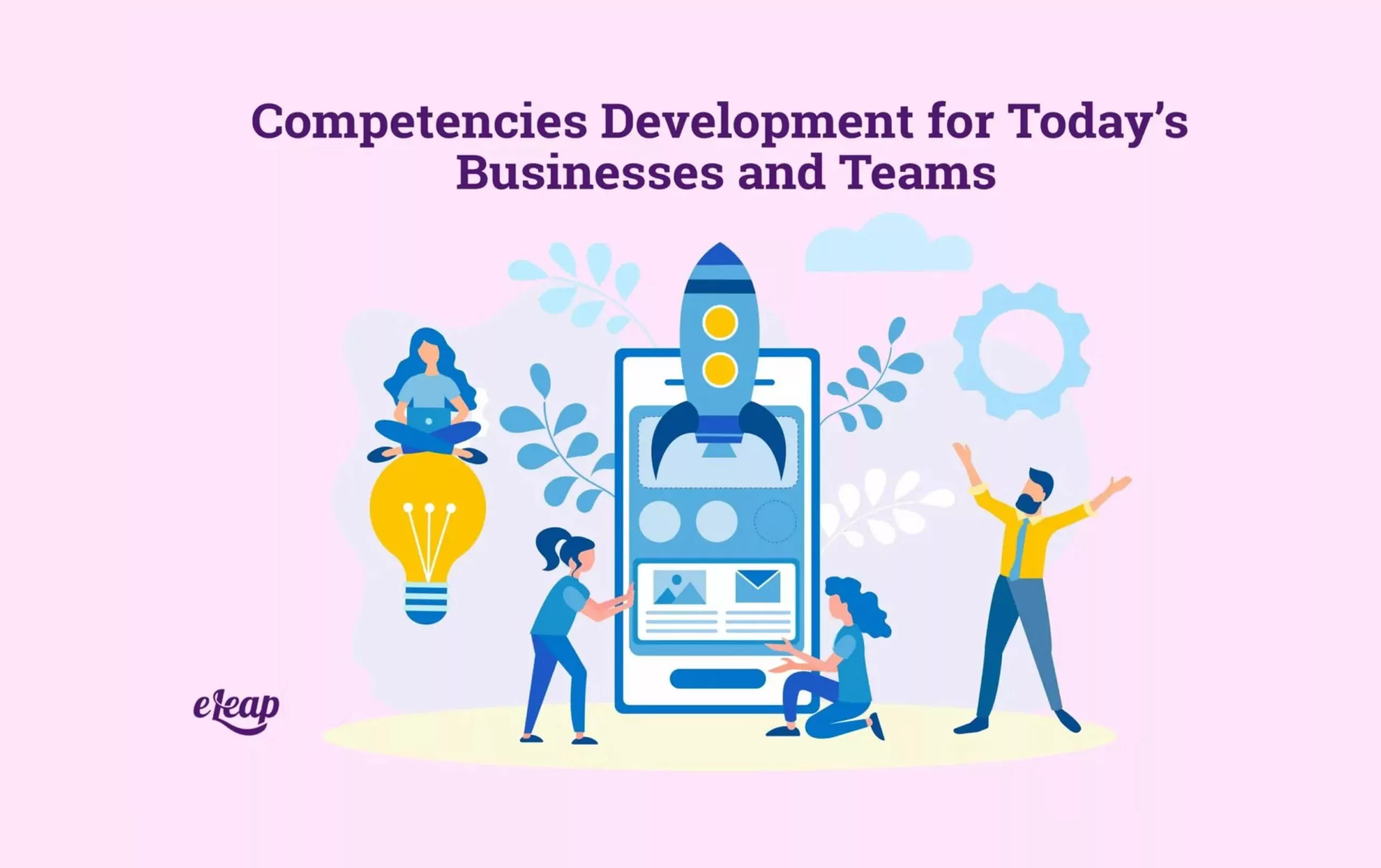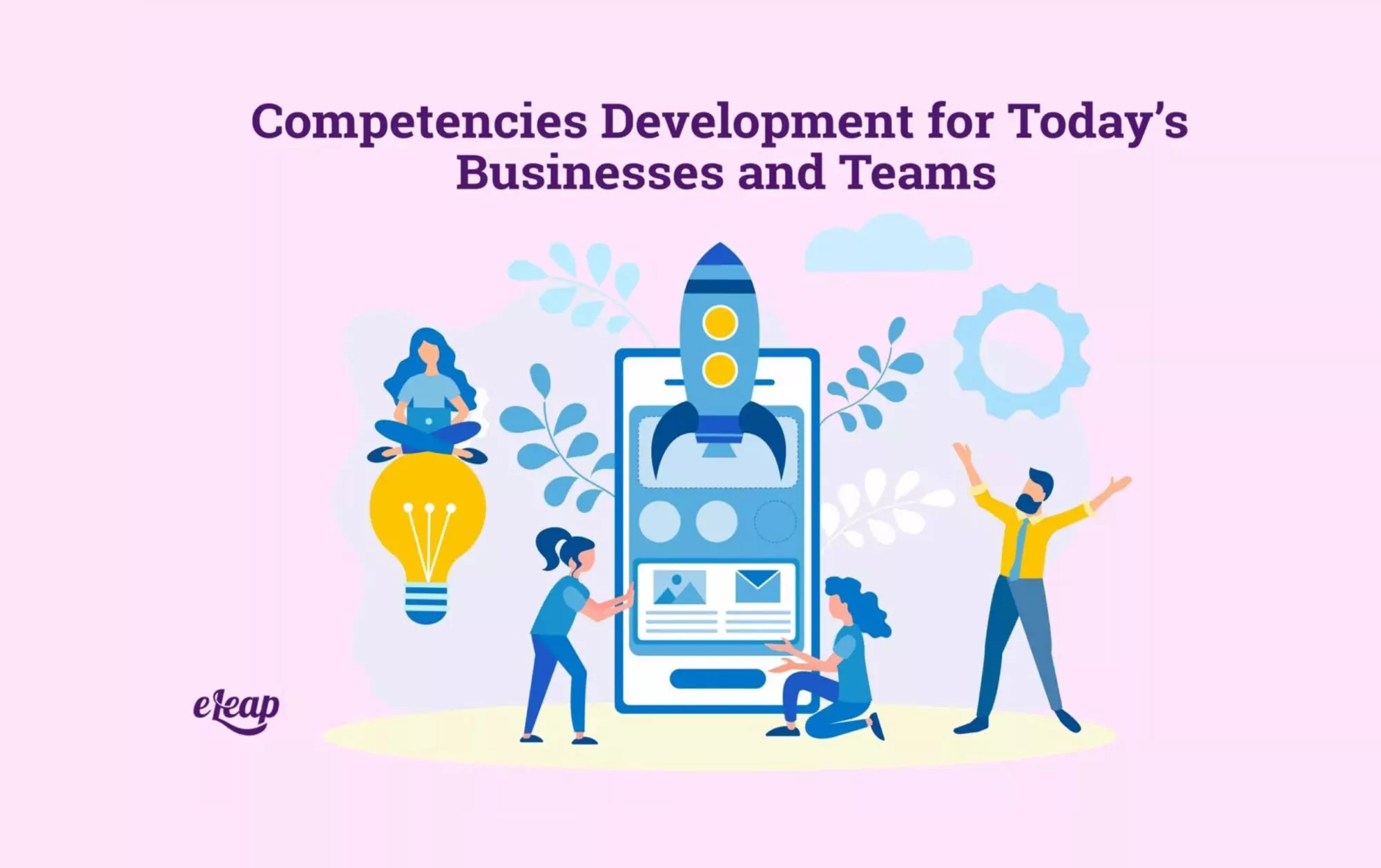Competencies Development for Today’s Businesses and Teams

Competencies development is a necessary area of focus for all businesses. The way that they are handled will vary from one company to the next, but that’s also the benefit of customized competency training and development. All organizations have some kind of language about competencies and meeting necessary benchmarks, but there’s a lot more to it than just another benchmark.
Competencies are designed to set standards for your teams and roles. They can help connect people with the right roles, provide a path for future development. And ensure that everyone is working to deliver the best experience for the customer or end-user. But what exactly are these, and more importantly, what does your organization stand to gain by adding them to the L&D list?

Here’s what you need to know.
Competencies Development Defined
Put simply, competencies refer to measurable characteristics, skills, knowledge, and attributes that allow an employee to perform successfully in their role. Skills are a part of this, and several skills could make up one area of competencies. Essentially, you’re setting the standard of performance for the organization. As well as the teams and individuals within it.
When you do it well, you will be giving employees and leaders a roadmap to success for professional and personal development. You will also be able to use these competencies to create better feedback and coaching conversations. That all leads to a more structured operation and a standardized process for development and training.
Examples of Competencies in the Workplace
There cannot be a process in place for competencies development without a clear understanding of what competencies are and which ones are most important. To set the standard for roles or teams, companies need to have a list that they can use to ensure that everyone is on the right track. These lists can also be used in reviews and one-on-ones.
When competencies are considered, people will find their roles are a better fit and companies will see that personal and professional development is on the rise. Let’s look at a few examples of competencies and why they matter.
Strategic Thinking and Problem Solving
Employees today need to be strategic and innovative in their thinking and their efforts. Those who are committed to problem-solving and find themselves comfortable in discomfort will succeed the best in these areas. Strategy is an important part of business and each role should know how they are involved in the strategic operations of the business.
These competencies ensure that people are capable of handling complex issues and willing to strive to achieve goals for the greater good of the organization. They are two critical skill areas where today’s employees need to thrive.
Business Acumen
Business acumen refers to someone’s knowledge and ability to be able to frame things from a business perspective. Leaders and managers already look at company decisions this way. Determining how business metrics or goals will be affected by certain choices.
Employees who adopt a strong business perspective in their roles will easily achieve their objectives and stay in line with the company’s goals and objectives. Not everyone can adopt this approach with ease, but it’s a must for every employee.
Growth Mentality
Employees will not be able to embrace feedback and coaching if they do not have a growth mindset. Leaders need to promote this mentality and provide coaching and feedback opportunities to help people with their growth and development. Companies have employees who come to work to do their jobs. And then they have employees who are ready to help grow the business by growing in their role and more.
Maturity
Maturity simply refers to professionalism, or the ability to handle situations with responsible and dignified approaches. It’s about employees not getting frustrated or perhaps “throwing a fit” when something happens in the business that they weren’t prepared for. This is best taught by example.
Leaders need to demonstrate professional maturity first and foremost. Then, employees will easily take responsibility for their roles and decisions while also being able to react appropriately to business situations, both good and bad.
Decision-Making Skills
Decisiveness is one of the most difficult skills to cultivate in employees. It’s natural for people to question their own skills or decisions, and that can make it difficult for employees to showcase their decision-making skills in the workplace. Coaches and leaders need to encourage quick, but thoughtful, decision-making.
This will ensure that progress continues, even if it’s not perfect. While not making a decision is a choice in and of itself. Companies today are trying to get away from this type of uncertainty. Empower your people with better decision-making skills and watch their confidence (and competency) soar.
Handling Conflict
There is always going to be conflict in the workplace, to some degree. Even in the best company cultures, there are small issues that arise between workers. With clients or prospective customers, and so forth. Employees need to know how to deal with ambiguity and conflict in a way that is professional and transparent.
It’s also important for people to know how to act without having all the information. Get comfortable with being uncomfortable and teach your team to do the same.
There are dozens of different competencies that companies will come across. This list is just an example to help you get started on the conversation and inspire you to create your own strategy for success with competency development. Now, let’s take a look at how the competencies of the organization play a role in individual development.
Organizational Competencies
Starting at the company level, organizations will see that it’s much easier to get employees to follow suit in competencies development. Companies need to utilize their core values to develop a list of competencies that are the entire purpose of the organization.
This will allow employees and leaders alike how to embody the values of the company and embrace development within these areas. Some companies go as far as to create their own core values-based competencies that include things like:
- Going above and beyond the minimum
- Becoming one’s best self
- Creating strong customer transformations
- Cultivate knowledge and expertise
Now, remember that these are just overarching ideas that you want everyone within the company to get behind. In order to do that, you’ll need to break these concepts down into actionable goals and ways that you can make sure everyone hits the mark with their competencies training and competencies development.
How to Incorporate Competencies at the Hiring Stage
Today’s employers are hiring based on competency more than anything else. It is more effective than traditional hiring approaches and offers a chance to get the best talent in the door a lot faster. Once competencies development has been established for the rest of the organization. It’s time to create a strategy for the hiring process.
Competency-based hiring is becoming the most common interview style for companies today, allowing people to express their abilities in relation to the role. It’s not just a list of responsibilities and duties—that’s the job description. Competencies are about the abilities and knowledge that a person has to be able to handle those duties and tasks.
When you set the standard for competency development at the hiring stage, you are telling all new employees that they are accepting a position that is focused on consistent growth and competencies development. You are showing people that they can be an asset to your team by leveraging these abilities and utilizing them to create their own career development paths.
Start with leaders and then existing employees. Once the introduction has been made and the new process has been rolled out. Then you can add this process to the hiring and onboarding phase. Allowing more employees to be invested from the beginning, which means they’re going to be more loyal, engaged, and more likely to stick around.
It’s About Engagement and It’s About Time
Speaking of engagement, that is one of the overarching goals here. Engaged employees are successful employees. Companies that want to see a better future for both the business and the employees know that competencies development is just part of the equation.
As more companies are looking for ways to incorporate reviews and ongoing feedback conversations. They are also looking for benchmarks and processes that will help standardize and streamline everything. That’s exactly what competencies development offers. Bear in mind that you’ll want to limit the number of competencies that you approach at once for the best chances of success.
Develop competencies for the organization, teams, and individual roles. Include a thoughtful strategy that offers organic inclusion of these efforts and get employees on board as soon as possible. This will ensure that your team is ready to give their best performance so that your company can continue to grow and thrive.
Just because it’s a “benchmark” topic doesn’t mean that this has to be a stiff process that’s tedious and uninteresting. Make it what you want and make sure that your employees are capitalizing on the resources available to become their best selves.
The eLeaP continuous performance management system provides organizations with powerful options to attract and retain high caliber team members.